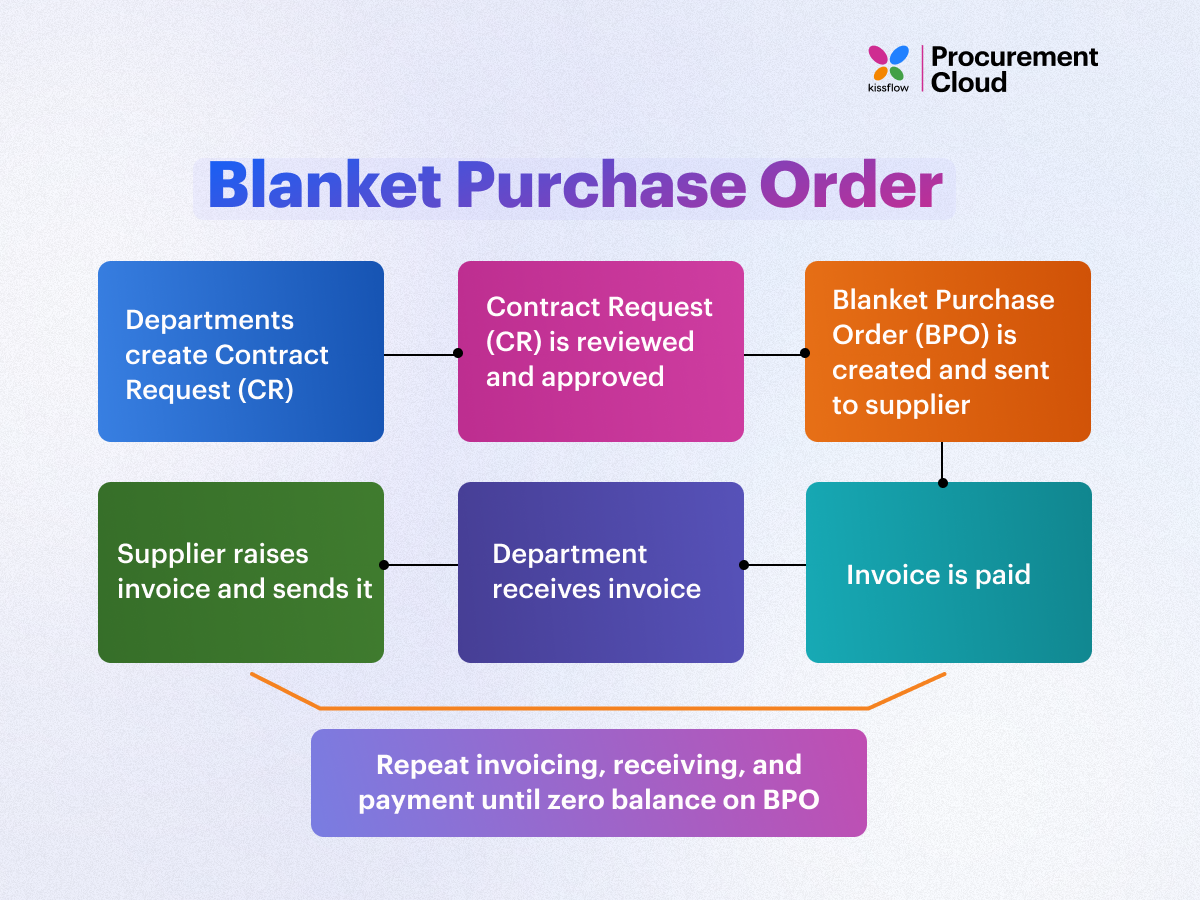

A blanket purchase order also known as a standing purchase order is a long-term contract between an organization and a supplier to supply products or services at a fixed price regularly for a certain amount of time.
Issuing a blanket purchase order with the specifics, such as price and delivery date, already stated is an effective approach to decrease time spent and processing delays if your organization makes several payments for the same items or services.
In turn, suppliers might send several invoices with the same BPO number. Limitations on blanket purchase orders might be set for a given period, such as a year or a given amount of money. Blanket purchase orders may specify item quality standards in addition to the time frame, quantity, and price.
Blanket purchase orders should only be used in the following situations:
Blanket purchase orders should never be used for orders if the pricing is uncertain, the product quality is suspect, or the seller is untrustworthy. We’ll look at how to use blanket purchase orders with two scenarios.
A popular sort of blanket purchase order establishes pre-negotiated line items for frequently used commodities or suppliers. For example, if a company buys a lot of paper towels and garbage bags from the same company throughout the year, a purchase order with two line items is set up ahead of time with an agreed-upon unit price for each item and a limit on how many units or dollars can be spent on each line item in a year. The provider simply has to deliver when items are required; the customer receives the units and payments upon receipt. Usually, the contract will come to an end when the line items, price amounts, or time constraints have been met.
Another form of BPO is one that is predicated on a certain time frame and risk limit but does not include individual line items. When allocating a restricted budget for advisory services for a certain project within a defined time window, these sorts of agreements are useful.
For example, if a report writing project’s total budget is $10,000, the buyer would issue a solitary purchase order with a quantity of 10,000 units at $1 per unit for a sum of $10,000 to be completed in a year. The quantity would reflect the dollar amounts to be spent on various aspects of writing reports as established later in the year, agreed upon by both parties, and then delivered in $1 increments. The customer would get a quantity of 2,000 units at $1 per unit for a total of $2,000 payable to the consultant if the initial report was specified, prepared, and delivered at a cost of $2,000 consented upon. The purchase order’s remaining value would then be $8,000. Subsequent reports would be specified, prepared, delivered, and funded in the same way until the purchase order’s entire budget of $10,000 was depleted.
☛Purchase Order Tracking: How to Keep Track of POs Efficiently?The following contract terms should be defined in blanket po template:
Let’s take a look at some of the benefits and drawbacks of using a blanket purchase order.
Let’s start with the benefits of blanket purchase orders.